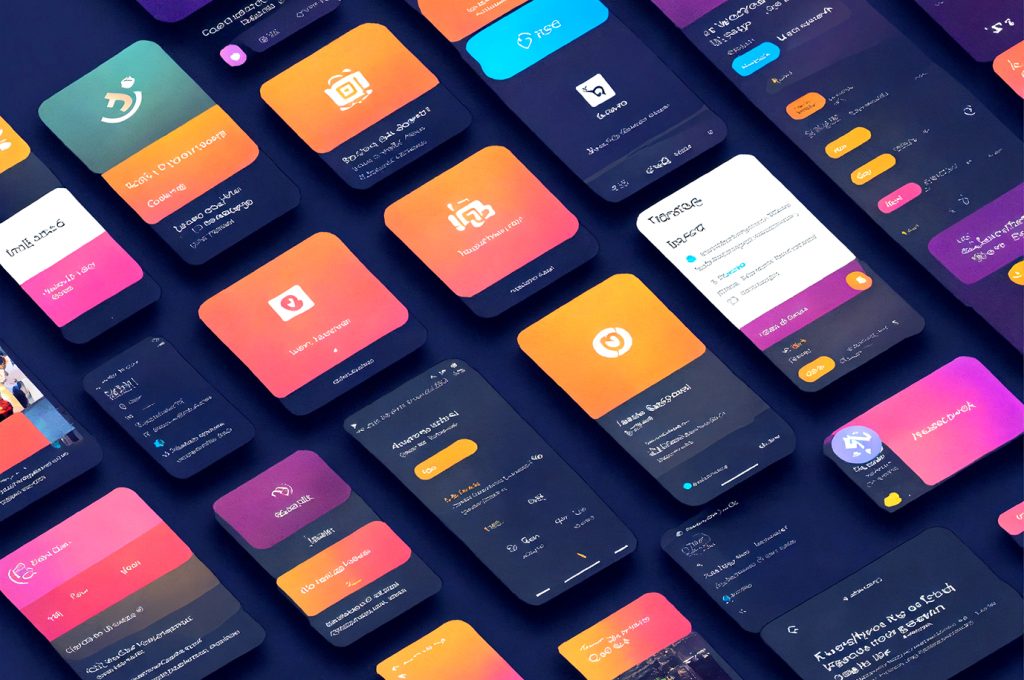The digital landscape has become an intricate web connecting individuals and communities around the globe. Woven within this network lies immense potential for positive change. Technology, when harnessed responsibly, can be a powerful tool to address pressing social and environmental challenges. User Interface (UI) and User Experience (UX) design sit at the forefront of this movement, shaping the digital solutions that tackle these issues head-on.
Thank you for reading this post, don't forget to subscribe!Thank you for reading this post, don't forget to subscribe!This article delves into the transformative potential of UI/UX social impact. We’ll explore how thoughtful design principles can be weaved into solutions that create a ripple effect of positive change in the world. Prepare to embark on a journey where we uncover the power of UI/UX in driving social good and guide you towards leveraging the expertise of Zimex Apex to bring your impactful vision to life.
Understanding the Role of UI/UX Social Impact:
Imagine a world where accessing critical services becomes effortless, where raising awareness about crucial issues transcends geographical barriers, and where collective action thrives through intuitive digital platforms. This is the power of UI/UX design in the realm of social impact.
Thoughtful UI/UX design plays a pivotal role in empowering individuals and communities. By creating intuitive and accessible interfaces, we can bridge the gap between people and the resources they need. This can range from educational platforms that cater to diverse learning styles to healthcare apps that simplify health information for users with limited medical backgrounds.
The cornerstone of impactful design lies in user-centered principles. This means prioritizing the needs, preferences, and experiences of the individuals who will be utilizing the solutions. By employing user research and incorporating feedback throughout the design process, we ensure that solutions are inclusive, responsive, and truly user-friendly. This fosters a sense of ownership and empowers users to actively engage with the platform, maximizing the potential for positive change.

Designing Solutions for Social and Environmental Challenges:
The landscape of social impact initiatives is teeming with examples of innovative UI/UX design solutions tackling a vast array of challenges. Let’s explore a few inspiring examples:
- Mobile Apps for Sustainable Living: Imagine an app that gamifies recycling practices, incentivizing users to adopt eco-friendly habits. This app, designed with intuitive interfaces and engaging features, empowers individuals to make informed choices that contribute to a healthier planet.
- Platforms Connecting Vulnerable Communities: Consider a platform that connects refugees with essential resources like housing, education, and healthcare. Through a user-friendly interface and multilingual support, this platform empowers displaced individuals to navigate unfamiliar territory and rebuild their lives.
These examples showcase the power of design thinking in tackling real-world problems. By integrating empathy, creativity, and collaboration into the design process, we can craft solutions that resonate deeply with users and drive meaningful social change.
Leveraging Technology for Good:
The potential of technology to amplify social impact initiatives is truly transformative. Emerging technologies like Artificial Intelligence (AI), Augmented Reality (AR), and Blockchain offer exciting possibilities:
- AI-powered Chatbots: Imagine a chatbot that provides mental health support, offering resources and guidance to individuals struggling with anxiety or depression. This AI-powered solution, designed with empathy and user privacy in mind, can offer readily accessible support to those in need.
- AR for Environmental Education: Consider an AR app that allows users to visualize the impact of climate change on their surroundings. This immersive experience, designed with educational goals in mind, can foster a deeper understanding of environmental issues and inspire action.
The possibilities are endless. By harnessing these cutting-edge technologies responsibly, we can create UI/UX solutions that address complex societal challenges in innovative ways. However, it’s crucial to remember the importance of ethical considerations and responsible design practices. Our focus must remain on leveraging technology for good, prioritizing user privacy and ensuring digital solutions are inclusive and accessible to all.
Empowering Communities Through Co-Creation:
Social impact initiatives thrive on the power of collaboration. Involving end-users, stakeholders, and community members in the design process fosters a sense of ownership and ensures solutions effectively address their needs. This approach is known as co-creation.
Co-creation strategies can involve workshops, user testing sessions, and online feedback mechanisms. By incorporating diverse perspectives throughout the design process, we gain valuable insights and create solutions that are truly responsive to the community’s lived experiences. This fosters a sense of ownership and empowerment among users, ensuring the solution is sustainable and continues to serve its intended purpose for the long term.
Measuring Impact and Driving Continuous Improvement:
The true measure of success for UI/UX design in social impact lies in its ability to create positive change. Therefore, measuring and evaluating the effectiveness of our solutions is paramount. Key metrics and indicators can help us assess user engagement, track behavior changes, and gauge the overall social impact of the initiative.
These metrics could include:
- Number of users actively engaged with the platform
- Frequency of user interaction
- Completion rates for key functionalities
- Changes in user behavior related to the addressed challenge
- Quantitative data on social impact (e.g., reduction in waste generated through an app)
- Qualitative feedback from users and stakeholders
By establishing clear goals and monitoring these metrics, we can continuously iterate and refine our designs. This feedback loop ensures that UI/UX solutions remain effective and optimized for maximum impact.

Conclusion:
The power of UI/UX design to drive social change is undeniable. By thoughtfully crafting intuitive, user-centered solutions, we can empower individuals and communities, bridge divides, and inspire collective action for a better future.
At Zimex Apex, we are a team fueled by a passion for positive change. Our UI/UX design expertise is dedicated to empowering organizations and individuals who are making a difference in the world. We believe that impactful design can be a catalyst for progress, and we are here to partner with you in turning your vision into reality.
Here’s how Zimex Apex can help you leverage the power of UI/UX design for social impact:
- User Research and Needs Assessment: We conduct in-depth research to understand the target audience, their needs, and the challenges they face.
- Co-Creation Workshops: We facilitate collaborative workshops with stakeholders and community members to ensure solutions are truly user-centered.
- Empathy-Driven Design: We prioritize user empathy throughout the design process, creating interfaces that are intuitive, inclusive, and accessible.
- Iterative Design and Testing: We employ an iterative design approach, continuously refining solutions based on user feedback and data analysis.
- Impact Measurement and Reporting: We help you establish key metrics and track the social impact of your UI/UX solution.
Ready to harness the power of UI/UX design to create positive change? Contact Zimex Apex today! Together, let’s design a future where technology empowers a more just and sustainable world.



